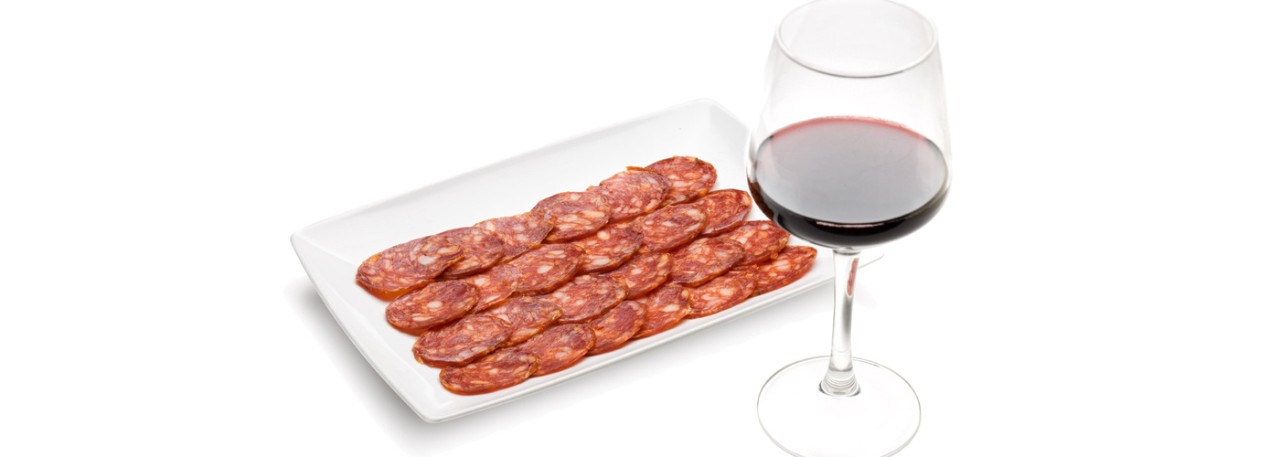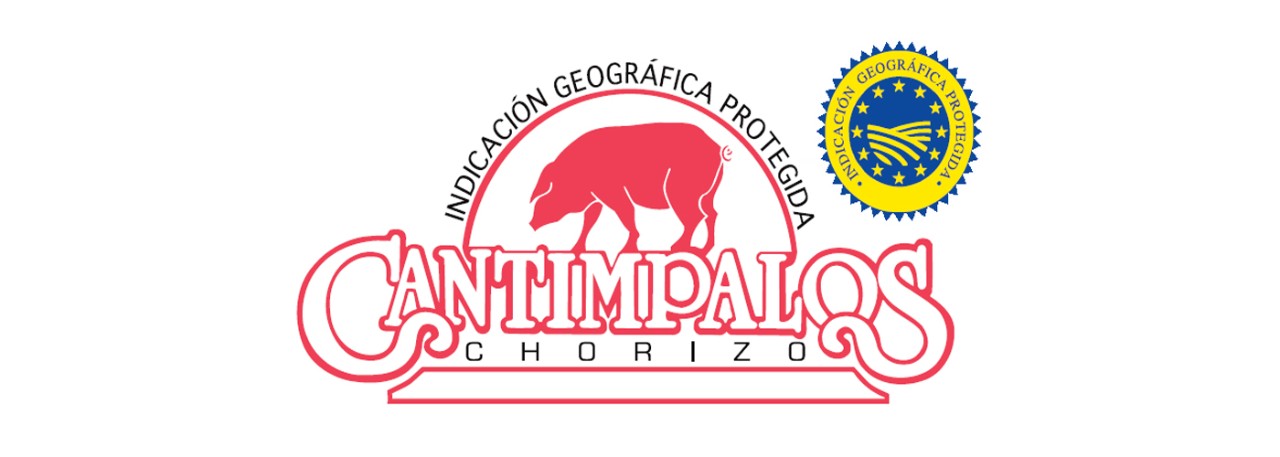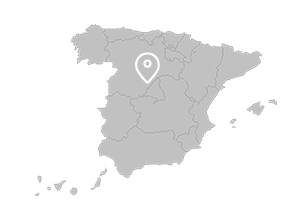.png.transform/rendition-xs/image_image%20(1).png)
Chorizo de Cantimpalos PGI
A cured sausage product made from fresh fatty pork, with salt and pimentón (a type of Spanish paprika) as basic ingredients, to which garlic and oregano may also be added, and subjected to a drying and maturing process. It may be presented in thick or thin slices.
Tasting notes
Consistency: firm to the touch, not too hard or soft and of even appearance throughout the sausage.
Appearance when sliced: intense red color when sliced, with reddish-white spots due to the presence of pieces of pigmented fat. The filling must be well bound, that is to say it must be homogenous, compact and free from any fatty bits larger than 0.5 cm in diameter.
Aroma: the intrinsic aroma must be made up of a number of components arising from the maturing process of the meat, slightly acid, smooth and of medium intensity, together with that of the permitted spices added to it, with none standing out above the others.
On the palate, its consistency must be juicy and cohesive, easily chewed, not very fibrous and free from undesirable matter (such as fascia, bone fragments, ganglia or tendon). On the whole, its taste must be pleasant and not spicy.
Other notes
Morphological properties, depending on format:
Sarta: the surface of the sausage must be dark red in color, smooth or slightly wrinkled and no bits of fat must show on the outside.
Achorizado: the surface of the sausage must be dark red in color, smooth or slightly wrinkled and no bits of fat must show on the outside; the outside must have a floury whitish mould.
Cular: part or all of the surface of the sausage must have a floury whitish mould, over a greenish hue caused by oxidation of the casing.
Chemical and physical properties:
- Moisture content between 20% and 40%.
- Fat in dry extract: maximum 57%.
- Protein in dry extract: minimum 30%.
- Hydroxiproline in dry extract: maximum 0.5%.
- Total carbohydrates expressed as % of glucose in dry extract: maximum of 1.5 % in the Sarta and Achorizado formats, and maximum of 3% in the Cular format.
- Chloride, expressed as sodium chloride in dry extract: maximum 6% pH between 5.0 and 6.0.
Production / Processing method
Only the following basic ingredients can be used to make the chorizo:
a) Fatty pork meat, obtained from registered pig farms, with a lean meat content of 70% - 80% and a fat content of 20% - 30%. Subcutaneous fats may not be added. The fat must be firm and consistent. The use of previously frozen or stored meat is not permitted.
b) Pimentón: Dry product obtained from grinding the ripe, dry and clean fruit of the Capsicum Annun L. and Capsicum Longum D.C. pepper varieties, in varying amounts ranging from 18 to 25 g per kilo of meat. At least 50% of the pimentón comes from the Pimentón de La Vera (Extremadura) Designation of Origin.
c) Refined sea salt (sodium chloride), with granules smaller than 2 mm, in varying amounts ranging from 15 to 22 g per kilo of meat.
Production process:
First the meat is prepared in the workshop, at an ambient temperature less than 12° C / 53.6º F for a period not exceeding two hours. All excess fat or parts of tendons which it may contain are removed. The temperature of the meat at the time of mincing must be between 0º and 2° C / 32º and 35.6º F. The mincing machines have plates with holes of varying diameter.
For 'Sarta' and 'Achorizado' chorizos, their diameter must be between 8 and 16 mm / 0.3 and 0.6 ins and 18 and 26 mm / 0.7 and 1 inch for 'Cular' chorizos. The mincing process mixes the ingredients and authorized additives to form a homogenous mass which is then rested in refrigerated rooms at a temperature of between 2 and 7° C / 35.6º and 44.6º F for a period of between 12 and 36 hours. The mixture should have a pH of between 5.5 and 6.5. After refrigeration, the mixture is stuffed into a casing. Care must be taken to ensure that no air gets in. This is then wired or tied with thread of three different colors (red, black and white) depending on its format, and subsequently cured.
The curing process lasts a minimum of 21 days for 'Sarta' chorizo, 24 days for 'Achorizado' chorizo and 40 days for 'Cular' chorizo. This should produce a shrinkage of at least 25 % from the initial mixture and the finished chorizo. The curing process comprises two stages: maturing and drying.
Maturing takes place in drying rooms at temperatures of between 6º and 16º C / 42.8º and 60.8º F and in relative humidity of between 60 and 85%. The drying process must take place in natural curing houses for over 40 % of the total curing time.
The chorizo may be cut in to chunks or sliced for vacuum packaging in a modified atmosphere or steeped in oil and packed in glass jars. The whole chorizos are identified by placing the manufacturer's label and the Protected Geographical Indication identifying label either stuck on its surface, or tied or stapled to one end of the chorizo. Cut or sliced chorizo carries the labels directly on the packaging.
Geography / Relief and climate
The defined production area for the chorizo lies on the north side of the Sierra de Guadarrama mountain range and extends in a strip measuring 40 km / 24.85 miles to the north-east of the range, from Riaza to Villacastín and from Puerto de Navacerrada to Carbonero el Mayor. It is structured as a plain composed of high plateaus carved by deep, narrow gorges, quite sandy and crumbling flat areas of land between the Somosierra and Guadarrama mountain ranges, cut through by rivers, streams and torrents. The defined area lies at an altitude of over 900 m / 2952 ft, giving it a favorable climate for curing chorizos.
Climate:
The combination of altitude, temperature, rainfall and misty days in the area give it the best conditions for curing chorizo. The average number of misty days is very low, around 15 per year, very much lower than in neighboring provinces such as Madrid, Ávila and Valladolid, where this figure may double. Mist and fog can be highly detrimental to the chorizo curing process.
Regulatory Council
Consejo Regulador de la IGP Chorizo de Cantimpalos
Plaza Mayor, 1
40360 Cantimpalos (Segovia)
Tel: (+ 34) 921 143 450
igp@chorizodecantimpalos.org
www.chorizodecantimpalos.org
Sources:
Its consistency must be juicy and cohesive, easily chewed, not very fibrous and free from undesirable matter.


- /content/dam/en/icex-foodswines/images/products/serrano-cured-hams-charcuterie/chorizo-de-cantimpalos-pgi/Chorizo%20de%20Cantimpalos%20PGI%20carr1.jpg
- /content/dam/en/icex-foodswines/images/products/serrano-cured-hams-charcuterie/chorizo-de-cantimpalos-pgi/Chorizo%20de%20Cantimpalos%20PGI%20carr2.jpg

Cantimpalos (Castile-Leon)
